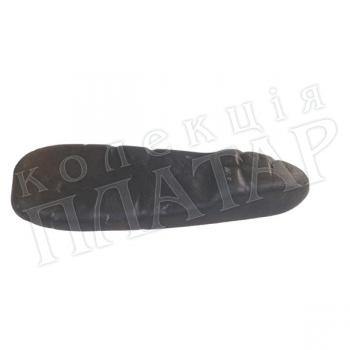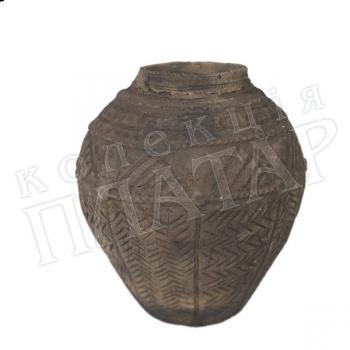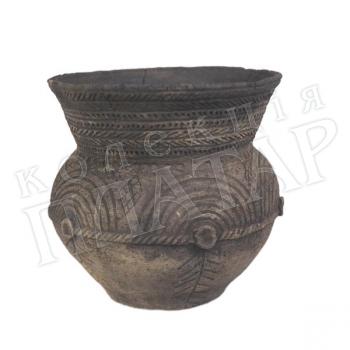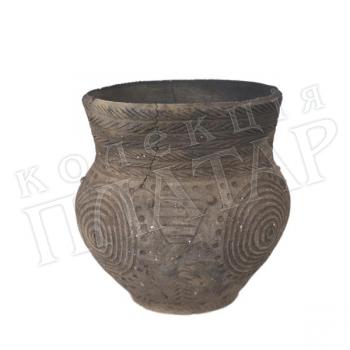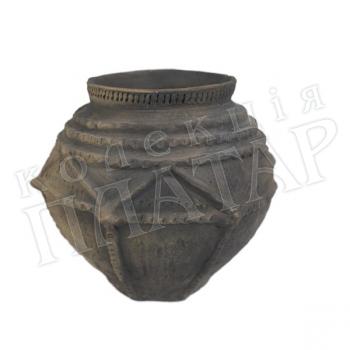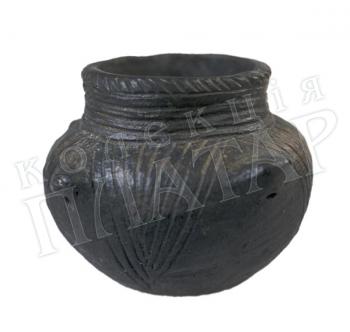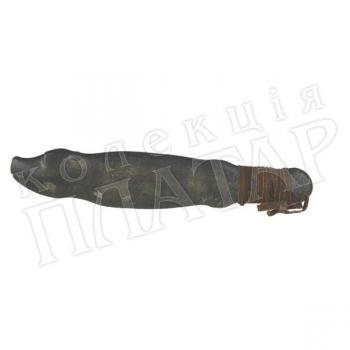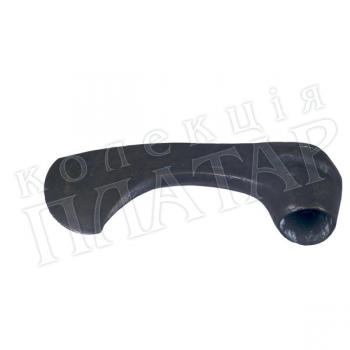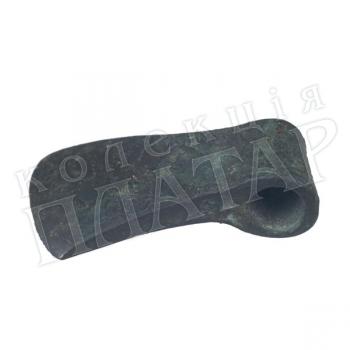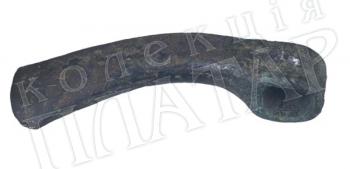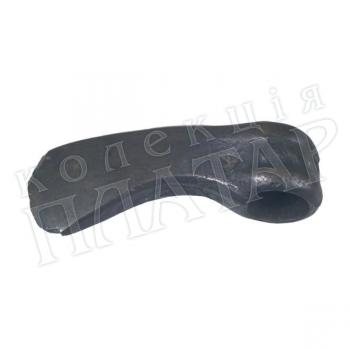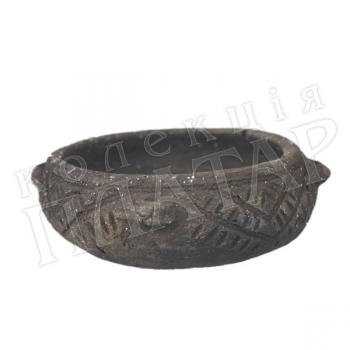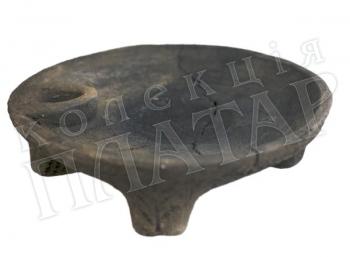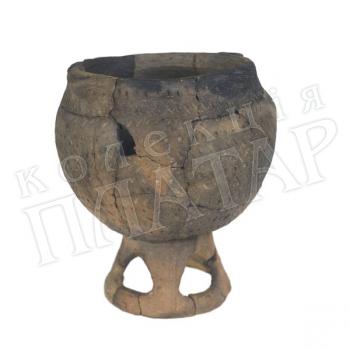A figurine is anthropomorphous, conventionalized, and oblate. Has the form of oblong triangle with rounding corners. The head - as the three-cornered sprout extended to the shoulders, marked at the front by the arcuated groove. The breasts are reproduced by two protuberant sticks. On each side the figure is decorated with three transversal grooves
Eneolithic and Bronze Age
Bronze Age (approximately IV and I thousand B.C.) was an epoch, when the oldest written history, which, however, borders old epic poems and legends, begins. Memory about this time is kept by thousands of burial mounds which are possible to be seen in Ukraine. We do not know the names of the peoples, who lived in those times, that is why archaeologists often give them conditional names, which originate from the types of buildings of burial places or localities, where these or those antiques were first found.
Ceremony of burial under the burial mounds is connected with the new pictures of life after death, which acquired distribution in the III thousand B.C. People tried to provide this life by new ceremonies, burial inventories, which included pottery, decorations, weapon, tools and magic amulets. A burial it became a place, where offerings, mentioning ceremonies were conducted. It was the symbol of connection with the ancestors, the symbol of property on a certain territory. Burial mounds became landmarks of old steppe roads.
It was in this epoch that the wheel became widespread — at first whole made, of wood. Wars of Bronze Age gave a shove to the development of armaments. Axe–mattocks, made of stone, became the symbol of this period. In some myths these wares are described as a weapon of the ancient gods. However, metallurgy of bronze attained prominent success on the territory of Ukraine already in the III millennium B.C. Of the ore obtained in the miners of Donbas and Volhynia, metal was smelted, which was used for making axes, spearheads, sickles and decorations. These wares discovered in old treasures and burial places strike by their perfection.
In the comparison with the previous time ceramic production experiences decline, in fact the nomadic way of life of the vast majority of population did not assist its development. In late Bronze Age old tribes on the territory of Ukraine were pulled in the whirlpool of events of that time world history, among which: hikes of “sea peoples”, Trojan War impertinent raids of bellicose riders — Cimmerians. That is why among the antiques found on this land we can see the things, made in the workshops of distant Siberia and Middle Asia, Central Europe and the Balkans.
The ceramic wares of pit and catacomb cultures — burial pottery — dated from early Bronze Age. The bronze battle–axes, look perfectly and the best of which make the impression of works of art. The vast majority of bronze wares in the collection can be dated back to late Bronze Age — epoch of hikes of “sea peoples” and Trojan War. Those are spearheads and darts, daggers and sword; possibly, the similar wares were in the arsenal of legendary Odysseus, the great warrior and traveler. By the way, the first mention about the “country of Cimmerian people”, south of modern Ukraine, is tied–up exactly with his wandering.
















